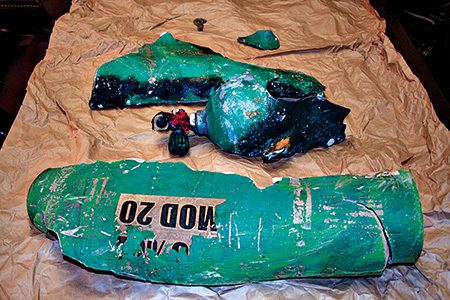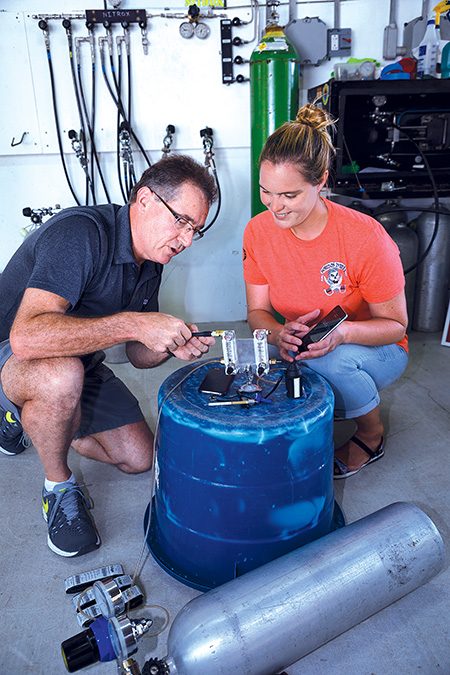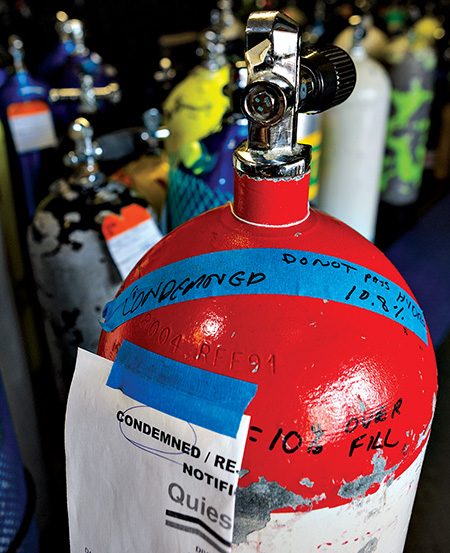Most divers know their scuba cylinders need a visual inspection every year and a hydrostatic test every five years (referred to as a requalification or a hydro). The actual regulations for cylinders and other dive equipment, however, are less clear.
There is a veritable alphabet soup of rules and regulations, some of which are likely unfamiliar regardless of your experience. Let’s review these U.S. regulations and how they apply to recreational divers.
• The Code of Federal Regulations (CFR) Title 49 covers the U.S. Department of Transportation (DOT) regulations, some of which address the required stamping on your cylinder, how to handle and transport cylinders, and requalification.
• CFR Title 29 covers regulations by the Occupational Safety and Health Administration (OSHA), which prescribes workplace safety and health requirements, including for dive operators, businesses, and professionals. It also defines hazardous materials (hazmat), which include cylinders and associated dive equipment. The OSHA dive regulations also apply to dive instructors and dive guides.
• The Compressed Gas Association (CGA) publications introduce scuba cylinder and breathing-gas requirements and recommendations. CGA P-5 covers the care of high-pressure cylinders for underwater breathing.

• Consumer protection regulations require dive equipment manufacturers to specify service intervals to prevent failure. If you do not follow these guidelines and an unfortunate accident affects you or someone for whom you are responsible — such as a dive buddy, friend or colleague, or other members of the public — you will be exposed to potential civil actions, more commonly known as liability suits. These regulations apply to recreational divers in terms of refilling cylinders, maintaining breathing-air quality, safely transporting cylinders in certain circumstances, and handling and caring for cylinders.
While the stipulations may start to appear overwhelming, they are likely things you already consider as safe diving practices. Injuries and fatalities from equipment-related accidents are rare. Typical failures include cylinder ruptures, regulator malfunctions, contaminated breathing gas, breathing hose ruptures, mechanical and heat damage, and mismatched threads when divers mix products from different manufacturers. The regulations help prevent these incidents and protect you and others from harm.
Instead of listing titles, chapters, document numbers, and other hard-to-locate publications, we can distill the information down to following the practices that divers learn through training.
• When you learn to dive, your instructors should make you aware of the hazards of handling cylinders and how to take care of your equipment. Remember these lessons, especially when the cylinders are full. Use common sense, such as not storing your cylinder near a furnace and securing it well in your car.
• Make sure your cylinder is in date. You may be disappointed if you travel far and discover the local filling station refuses to fill your cylinder. Use only authorized filling stations, which should do regular air-quality testing and have the certificates to demonstrate it. Service your dive gear at the recommended intervals, and remember that if it fails you, it also fails your buddy.

• As with cylinder filling, use only authorized repair centers and testing stations, and make sure they have trained employees with visible certificates. They are responsible for telling you your equipment is no longer safe to use.
• Do not become complacent. Our scuba gear is life-support equipment that we fully depend on when underwater. The risks never change even if our perception of them does. It is usually complacency that injures or kills. Rules and regulations help protect you and those around you, but they will work only if you know and abide by them.
Divers may wonder if they are subject to the laws of the country where they are diving. The answer is generally yes — ignorance does not get you off the hook. Good safety practices will help prevent accidents and protect people. Most countries that host dive tourism have health, safety, and hazardous equipment laws. In the U.S., Canada, Europe, and other more-developed regions, the requirements are not difficult to locate. In some less-developed areas, the rules are not as clear — but this does not mean that they don’t exist. In an unfortunate accident, not knowing the laws might make the outcomes significantly worse.
Most countries follow similar trends in terms of high-pressure equipment to help mitigate incidents. The International Organization for Standardization (ISO) is an excellent example of multinational collaboration, and its standards are well-respected worldwide.
Understanding dive equipment regulations and following safe practices will lower your dive accident risk.

© Alert Diver — Q2 2024